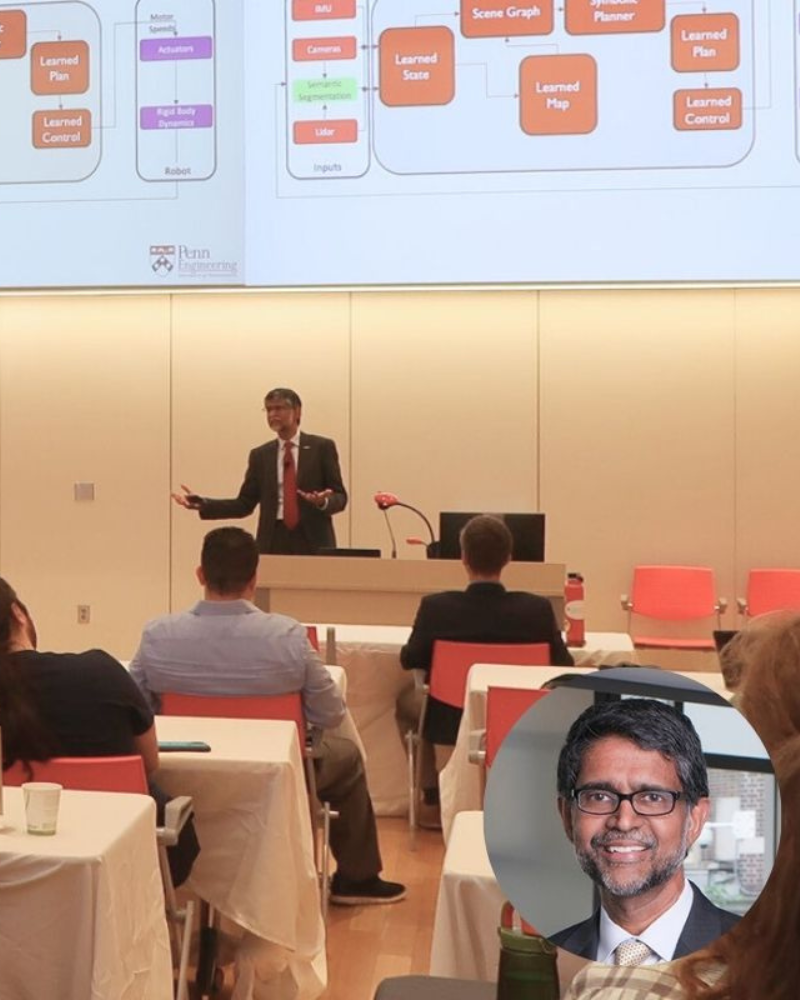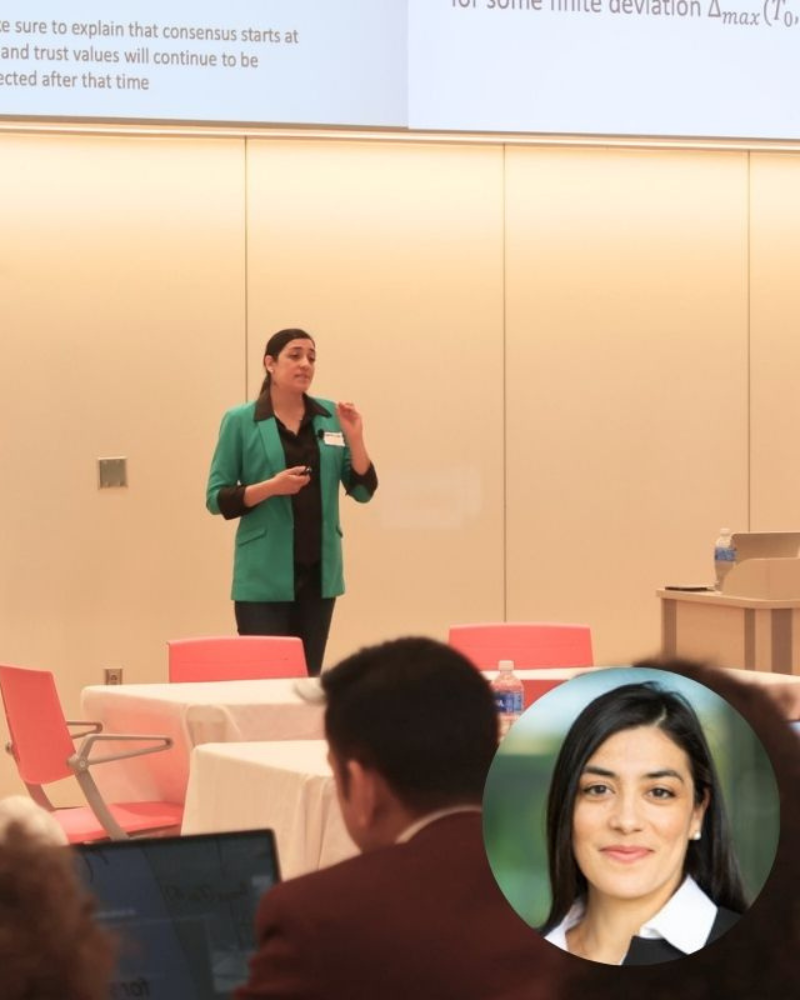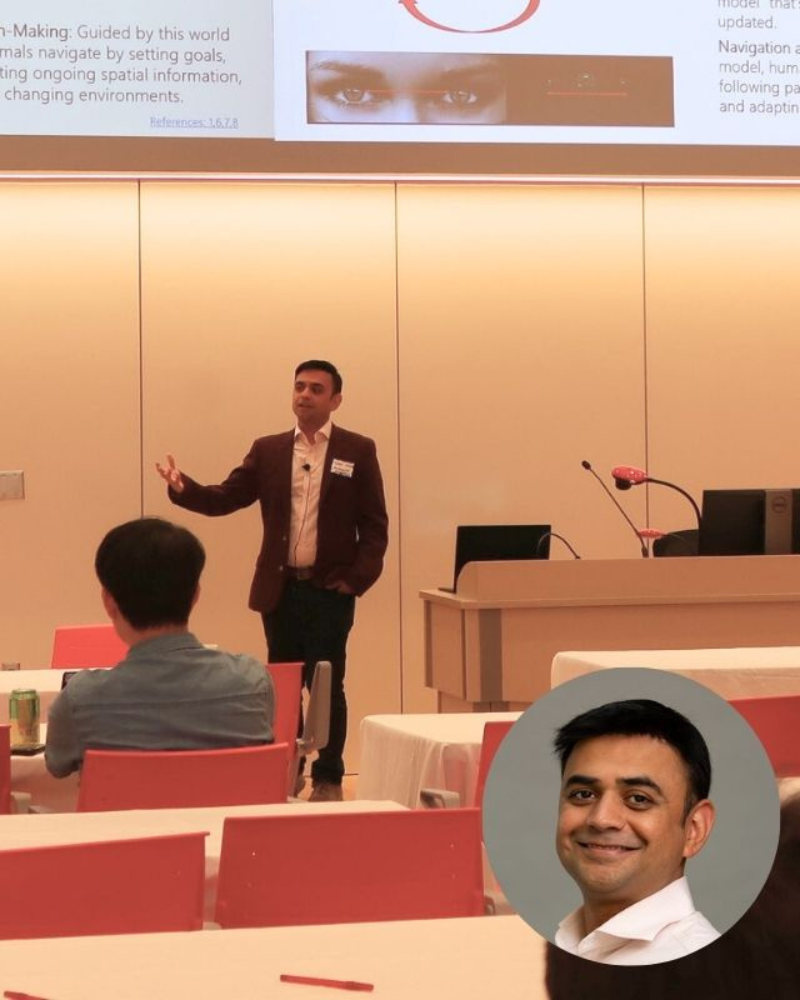MRC Symposium Showcases Advances in Robotics and AI
On May 2, researchers, students, and industry professionals gathered at the University of Maryland’s A. James Clark Hall for the 2025 Maryland Robotics Center Research Symposium. The event brought together emerging minds and established experts to explore how robotics is reshaping the way we move through and make sense of the world. The daylong symposium showcased a broad range of projects and perspectives. From student-designed autonomous vehicles to global strategies for networked robot teams, each presentation spoke to a future where machines are not only intelligent, but also responsive to real human needs.
A Platform for Emerging Talent
Throughout the day, the Clark Hall Forum buzzed with conversation and curiosity. Lightning talks and poster sessions gave MRC students and faculty a chance to present research on autonomous navigation, human-robot interaction, learning algorithms, and more. Many projects emphasized not just technical innovation, but also inclusion and collaboration across disciplines. These student-led presentations reflect the center’s mission to foster a collaborative research environment that supports both early-career and senior researchers.
Keynote Spotlights: From Forest Canopies to Ocean Depths
This year’s symposium featured three keynote talks that bridged theory, experimentation, and application across different environments.
|

Vijay Kumar, Nemirovsky Family Dean of Penn Engineering at the University of Pennsylvania, opened the morning with a talk on autonomous micro aerial vehicles. These small drones are designed to fly without GPS, navigating through dense forest canopies and narrow tree lines to gather data for agriculture and forestry. Kumar described the software architecture, motion planning, and semantic mapping that allow these systems to operate independently in remote and rugged landscapes.
|
|
 In the afternoon, Stephanie Gil, assistant professor at Harvard University, shared research on multi-robot coordination in unpredictable environments. Her talk focused on how distributed robot teams can still function when communication is unreliable or when individual agents are compromised. She introduced the idea of “stochastic observations of trust”, a method for modeling an agent’s reliability based on probabilistic cues. Her team’s experimental work ranges from urban delivery routing to marine expeditions, including a real-time rendezvous with sperm whales off the coast of Dominica. In the afternoon, Stephanie Gil, assistant professor at Harvard University, shared research on multi-robot coordination in unpredictable environments. Her talk focused on how distributed robot teams can still function when communication is unreliable or when individual agents are compromised. She introduced the idea of “stochastic observations of trust”, a method for modeling an agent’s reliability based on probabilistic cues. Her team’s experimental work ranges from urban delivery routing to marine expeditions, including a real-time rendezvous with sperm whales off the coast of Dominica.
|
|

Closing the day, Vivan Amin, research incubations director and technical program manager at Microsoft,offered a view into the next frontier of robotics: embodied intelligence. Drawing from Microsoft Research’s work on large AI models like Magma and WHAM-Muse, Amin explored how new tools in perception, planning, and manipulation are helping robots see, think, and act more like humans. He stressed the need for engineering practices that scale these breakthroughs into systems that can work safely and effectively in the real world.
|
Connecting Research to the Real World
The symposium was preceded by Industry Night on May 1, an evening of panels and networking that brought students into direct conversation with professionals from Airgility Inc., MITRE, Lockheed Martin, and other leading companies. The event emphasized the importance of collaboration between academia and industry in translating robotics research into public benefit.
Throughout the symposium, one theme remained constant: the future of robotics is not just about faster processors or smarter algorithms. It’s about how people and machines can work together to solve meaningful problems. By creating space for both technical exploration and human insight, the Maryland Robotics Center continues to shape a future where robotics improves how we live, work, and connect with the world around us.
Related Articles:
Barua Wins NSF Grant
UMD Engineering & HII Partner to Accelerate Defense Technologies
Using Innovation to Advance Ethical and Translational Brain Cancer Research
Dylan Hurlock Receives Wings Club Foundation Scholarship
BIOE Associate Professor Explores How Huntington’s Protein Detects Curved Membranes
UMD Semiconductor Retreat Builds Strategic Momentum
Erika Moore Named to Science News 2025 “Scientists to Watch” List for Fibroid Research
AI Tool Reveals Gaps in Ancestry Reporting Across Biomedical Research
UMD Student Bridging Research Innovation and Education Advocacy
New Initiatives Push Toward Safe & Reliable Autonomous Systems
May 6, 2025
Prev
Next
|
|